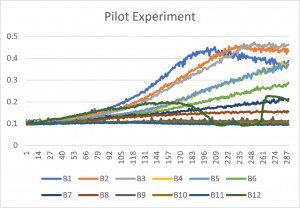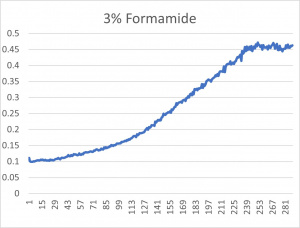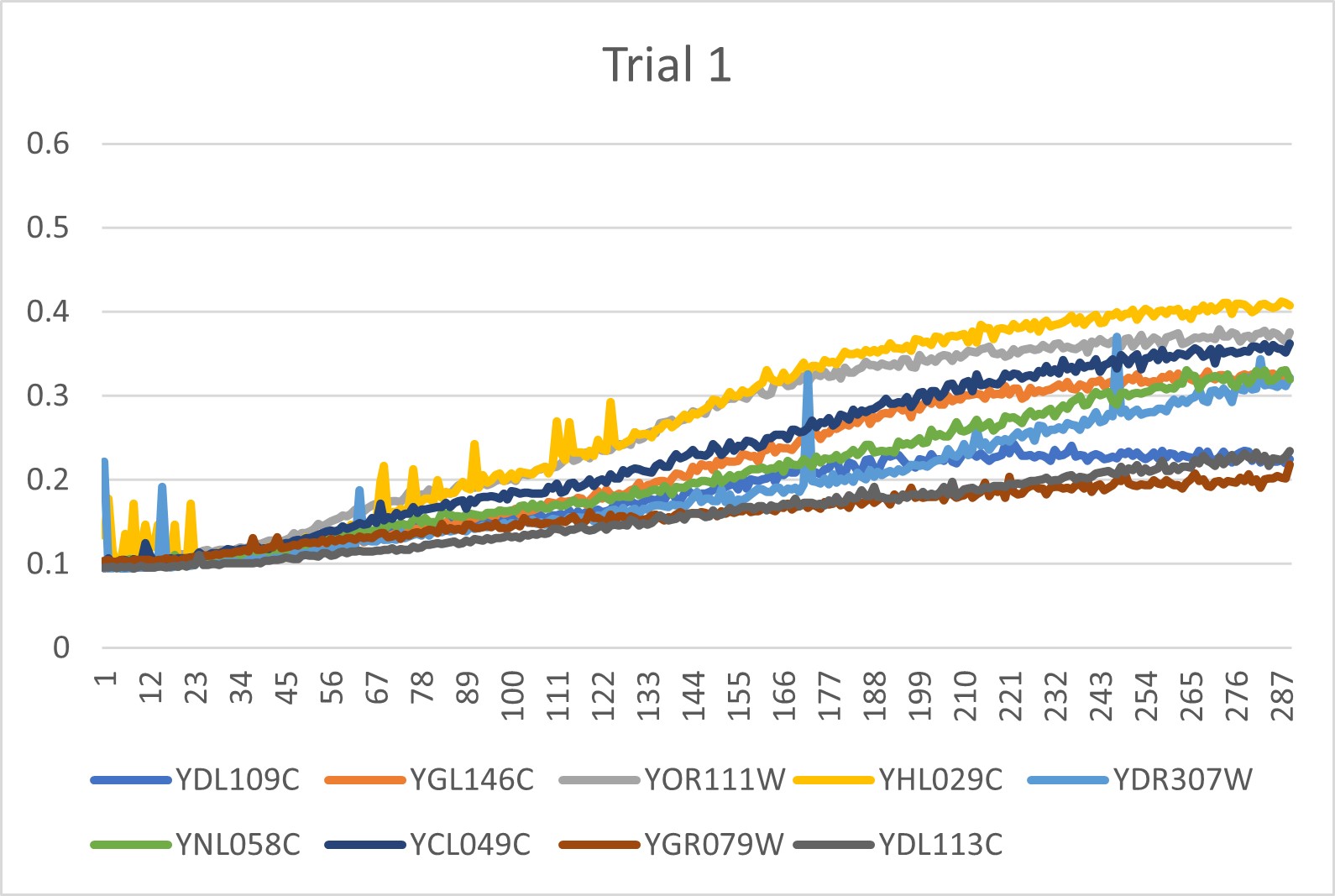Difference between revisions of "UW-Stout/Formamide SP22"
(→Results) |
(→Results) |
||
| Line 75: | Line 75: | ||
===Results=== | ===Results=== | ||
[[File:trial11.jpg|200px|] | [[File:trial11.jpg|200px|] | ||
| + | [[File:trial11.jpg]] | ||
Revision as of 17:01, 9 May 2022
Contents
Wild Yeast Cell Pilot Procedure
Caution
Neat Formamide is harmful to the eyes, if swallowed, inhaled, or absorbed through the skin.
Materials / Equipment
- Neat Formamide, 33ul
- Sterile water, 567ul
- 0.2ml flat cap PCR tube, 13
- Well plate
- Wild yeast cells, 600ul
- Molecular Devices SpectraMax Plus 384 Microplate Reader
- Micropipet 100ul
- Micropipet tips
Formamide Concentrations
- 0.5ul formamide + 49.5ul sterile water
- 1.0ul formamide + 49.0ul sterile water
- 1.5ul formamide + 48.5ul sterile water
- 2.0ul formamide + 48.0ul sterile water
- 2.5ul formamide + 47.5ul sterile water
- 3.0ul formamide + 47.0ul sterile water
- 3.5ul formamide + 46.5ul sterile water
- 4.0ul formamide + 46.0ul sterile water
- 4.5ul formamide + 45.5ul sterile water
- 5.0ul formamide + 45.0ul sterile water
- 5.5ul formamide + 44.5ul sterile water
- 0.0ul formamide + 50.0ul sterile water
Procedure
- Obtain the neat formamide (refrigerated) and sterile water
- Obtain and label 12 PCR tubes 1-12
- Obtain one more PCR tube to transfer 33ul of neat formamide inside, can put excess in
- Use the 13th PCR tube to transfer the amount of formamide to each PCR tube as needed
- Pipet appropriate amount of formamide and sterile water into the labeled PCR tubes according to number
- In a sterile environment, pipet the liquid (50ul) from the PCR tube into the well cell as well as 50ul of the wild yeast cells
- Incubate assess tray at 30 degrees Celsius for 24 hours and record data
Results
- The x-axis corresponds to the concentrations listed up above (ex: B1 corresponds to the 0.5%)
- B-12 is an experimental error- since it has a concentration of 0% formamide anyway, it was left in the final graph
- The 3% formamide used in the pilot experiment and represented as B-5 (in the top-most picture) was chosen to be used on the transformed yeast cells
- This was deduced due to the position of B-5
- B-5 was able to grow, but didn't grow too much- simply put, it was in the middle
Knockout Yeast Cell Gene
Materials / Equipment
- Neat formamide, 18ul
- Sterile water, 423ul
- 0.2ml flat cap PCR tube 10
- Well plate
- Knock out yeast cells
- Molecular Devices SpectraMax Plus 384 Microplate Reader
- Micropipet 100ul
- Micropipet tips
Procedure
- Obtain neat formamide (refrigerated) and sterile water
- Obtain and label PCR tubes 1-9
- Pipet approximately 18ul formamide into a 10th PCR tube, can put excess in
- Using the 10th PCR tube, pipet 3.0ul of formamide into each PCR tube (labeled 1-9)- this minimizes contamination
- Pipet 47.0ul of sterile water into each of the numbered PCR tubes
- In a sterile environment, pipet 50ul of liquid from the PCR tubes into well cells. Pipet 50ul of each knockout strain into the appropriate well cells
- Incubate assess tray at 30 degrees Celsius for 24 hours and record data
Results
- Ran three trials, trial one is posted up above in picture form
- B1 through B-9 represents the nine transformed yeast cells used
- Computed doubling times from the average times of the three trials


